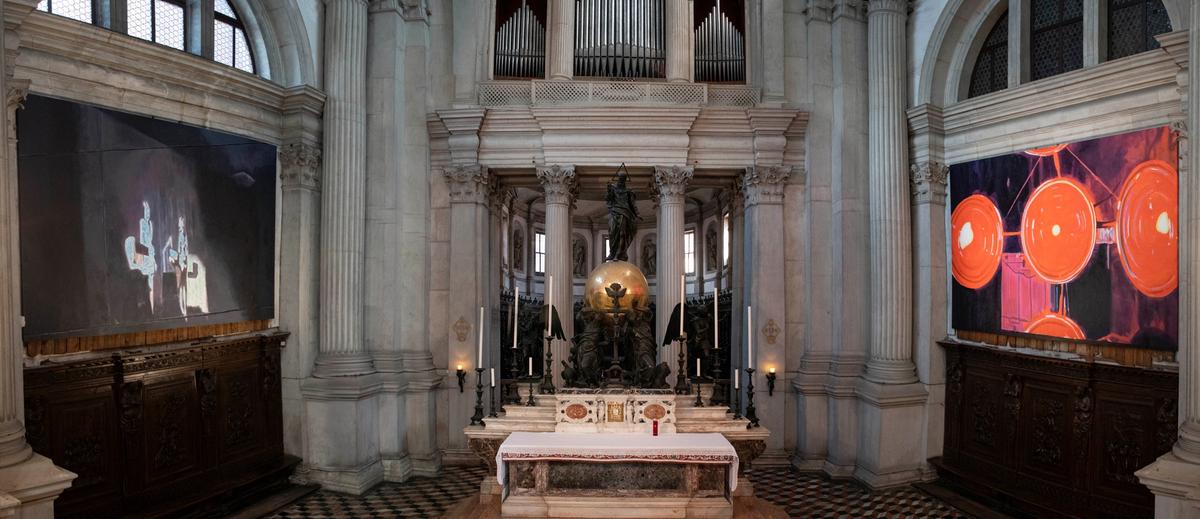The Belgian artist Luc Tuymans has created two major new works for the altar of a 16th-century church on a Venetian island. Tuymans's paintings, entitled Heat and Musicians (2025), go on show in the Abbey of San Giorgio Maggiore next month, across from St Mark’s Square.
Tuymans’s works replace a pair of canvases by the 16th-century artist Jacopo Tintoretto—The Last Supper and The People of Israel in the Desert—which will undergo restoration funded by the Save Venice conservation charity.
“My paintings—Heat, and Musicians (both 2025)—aren't installed in a museum; rather they are installed at the centre of a space of worship, where people regularly attend services,” Tuymans says. “This situation provides a completely different assessment of how an artwork is to be perceived, and responded to.
“How the paintings engage with the architecture of the space is also important. My work is wholly integrated into the Palladian basilica, not placed next to it, or around it, like previous installations before—Anish Kapoor, Berlinde Der Bruyckere.”
Tuymans’s paintings were commissioned by Benedicti Claustra Onlus, the non-profit branch of the Benedictine Community of San Giorgio Maggiore, and the Draiflessen Collection, which was founded in 2009 by the German-Dutch Brenninkmeijer family. He describes the works as being in dialogue with each other.
“With Heat, I wanted to introduce the notion of heat & warmth—specifically the idea of heat within a typically vast and cold basilica,” Tuymans explains. “...Musicians is more ghost-like, cold, and ephemeral. The monks at the basilica have told me that they read the dialogue in another way, too—that the cross shaped glowing heat lamp provides the other with a spiritual warmth, which is fine with me. There's an intriguing relationship between the two paintings.”
A project statement explains that Tuymans’s intervention should not be misunderstood as a reinterpretation of Jacopo Tintoretto’s works. “That is not the aim of the project,” the statement says. “Rather, he was invited to engage with the sacredness of the space and its history, just as Tintoretto once did centuries ago.”
Tuymans has also painted a contemporary illuminated manuscript which will be displayed on the lectern of the badalone (bookrest) in the centre of the choir. This manuscript will join other examples in a collection founded by Benedicti Claustra Onlus, to which the Italian artist Nicola Samorì donated a manuscript earlier this year.
In 2019, Tuymans showed more than 80 works in a vast exhibition at the Palazzo Grassi, the French billionaire François Pinault’s gallery on the Grand Canal. The show was entitled La Pelle (skin) after a 1949 novel by the Italian writer Curzio Malaparte. The book is set in Naples at the tail end of the Second World War—when “Europe was in chaos, just like today”, said Tuymans at the time.
The basilica of San Giorgio Maggiore, with its imposing columns and façade made of white marble, was designed by the renowned Renaissance architect Andrea Palladio. Its silhouette at dusk has been captured by Claude Monet, while inside there are also paintings by the 16th-century Italian artist Jacopo Bassano.
- Luc Tuymans-Basilica of San Giorgio Maggiore, Venice, 9 May-23 November


